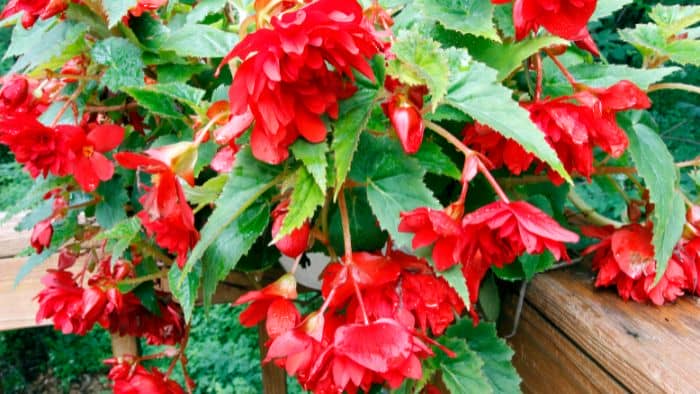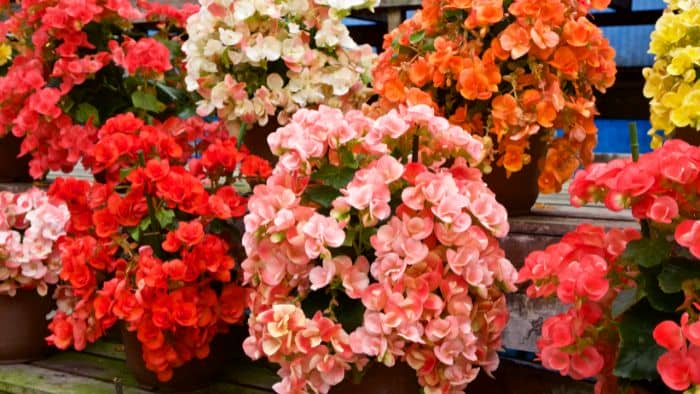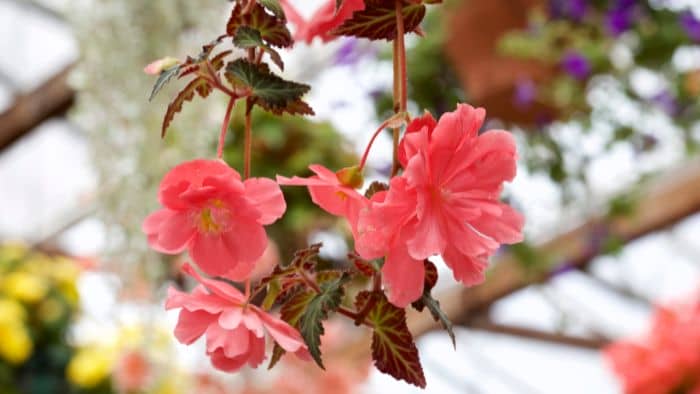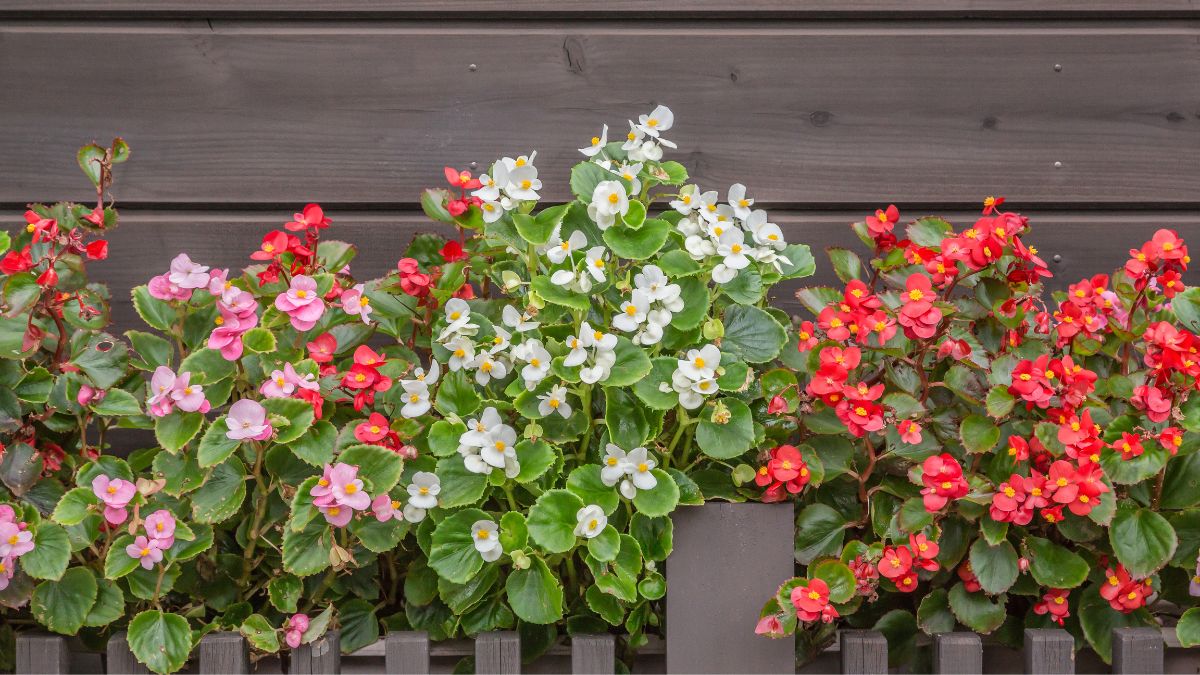Are you looking for answers about the Best Potting Soil for Begonias? If so, then this blog post would be of benefit to you. Using soil that has the right ingredients for your plant will ensure that you have a thriving garden. Seeing that there are several types of potting soils available on the market, it is essential to learn about which one best suits your plants.
Begonias are sought-after indoor plants that grow well in containers or hanging baskets. They lend an aura of beauty to any surroundings and are therefore beneficial to have as a part of your setting. Aside from that, to help them reach their full potential, growing them in a suitable environment that is nutrient-rich is best.
This article aims to educate both new and established gardens to get the best out of their begonia plants. Have a look at the information below to learn about the ins and outs of having a flourishing begonia garden.
Know Your Begonias
Knowing your begonia plants is important if you want to have a lush garden. Although these plants are not very demanding, affording them the best care would be beneficial to their surroundings. Begonias are best suited in partial shade or filtered sunlight as direct light for extended periods can flaw their foliage and flowers.

Making sure that your plants are in the proper environment is essential to their growth. With regards to light and soil conditions, this is particularly true. Therefore, for your plant to maintain its stance, growing it in the best conditions is recommended. On the other hand, too much shade could result in decreased blooms.
The best potting soil for begonias is recommended when growing these eye-catching plants. Due to its intolerance of cold climates, it is advisable to grow them in a frost-free environment. By doing this, loss of the plant tuber will be avoided.
Best Potting Soil For Begonias
Using the best potting soil for begonias is essential. When the soil is healthy and full of nutrients, your plant will flourish, giving off the best results. Begonias are known for growing their best in soil that has excellent drainage properties. The soil mix should include well-decayed mold, garden loam, coarse sand, and humus.
Although water is essential for begonias, it should be used very carefully. This is because the soil should not be soggy after watering. In fact, watering should be done only when the soil starts to dry out. This will ensure that your plant roots are not exposed to diseases that can cause them to rot.
Fertilizer is also of importance when growing these magnificent plants. To strengthen the growth of your begonias, using half-strength fertilizers with trace elements every two weeks is recommended. You will notice a vast difference in their growth speed and lush foliage with the correct fertilizer application. Watch the next video and learn how to take care of begonias.
Begonia Planting Tips
Planting begonias is a simple task that can be easily achieved with the right steps. Knowing the likes and dislikes of your plant will enable you to take better care measures when establishing them. Listed below are a few tips that you can follow when planting them.
Tips:
- Firstly, keep in mind that before planting, tubers should be inspected and any that have become soft should be removed.
- Once the pink and white buds or sprouts are visible, your plant should be moved to a warmer location that maintains a temperature of about 70 degrees F. These sprouts should be handled with extreme care as they can be easily broken off.
If you have a greenhouse, tubers should be moved in at the earliest. Use the best potting soil after moving them as it is the same as the starting mix but without fertilizer. - Ensure that you fill the flat pots with a depth of 4 inches of soil. Use an ample amount of space between tubers when planting. This will allow them to spread out while growing.
- Filtered light and soil are essential parts of growing begonias. Also, when the stems have grown substantially, replant them using fertilized soil.
- To get the best results, place a saucer or shallow bowl at the bottom of the plant pot. This will ensure perfect drainage when using the best potting soil.
Begonia Pests And Diseases
Begonias provide a ray of color to any environment as they bloom during the late summer season until early winter. These easy-to-care-for plants grow exceptionally well in partial shade. Whether you’re growing them in containers or hanging baskets, these plants are suited for indoor environments as they complement their surroundings.

However, just like most plants, they are also prone to pests and diseases that can cause harm if not promptly dealt with. Have a look at the list below to learn more.
- Slugs and snails – Injurious pests and diseases feed off tuberous begonias. Slugs and snails are a constant problem that is easily managed by baiting. To ensure that your plant is not affected by such pests, using the best potting soil is recommended. This type of environment will keep them under control.
- Stems – Decayed stems appear as soft brown spots on parts of the plant. In order to save the stems, cut off the damaged parts right to the point of the rot to expose the clean tissue. Thereafter, dust the exposed parts of the stems with rose dust that contains sulfur.
- Mildew – Begonias are affected much by powdery mildew which is a serious disease. To treat your plant, spray it with a mild natural fungicide once or twice per month.
- Earwigs – These scavengers are known to create tiny holes in the leaves of plants. They are usually at work during the night and eat leaves, flowers, and other parts of the plant. A solution of dishwashing soap and water works well to get rid of them.
Conclusion
Begonias are known for their exquisite flower sizes and attractive foliage. Growing them indoors helps to protect them from the element as they’re fragile plants. The flower is directed by the positioning of the leaves and will grow in many directions because of this.
Begonia flowers have a center bud known as the male and two side buds that are identified as female. To ensure the flowers reach their full potential, it is advisable to remove the two side buds. For better circulation of water and nutrients, removing browned leaves is best. When your plant reaches a foot high, it should be supported with stakes or plastic ties for the best care.
Also, keep in mind that the stems will separate from the tuber within a few weeks. This is a good time to gently wash the tubers without damaging the roots and dry them completely. Here’s more information from The American Begonia Society.

FAQs
[rank_math_rich_snippet id=”s-cba3e50d-c4a3-4c36-a21c-a23f95651dc1″]

